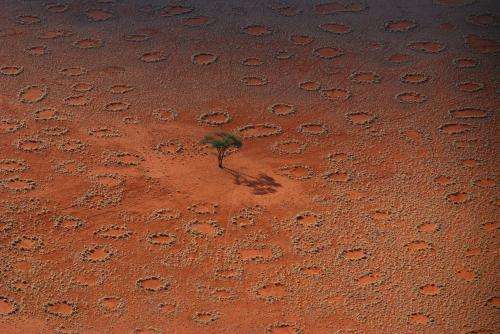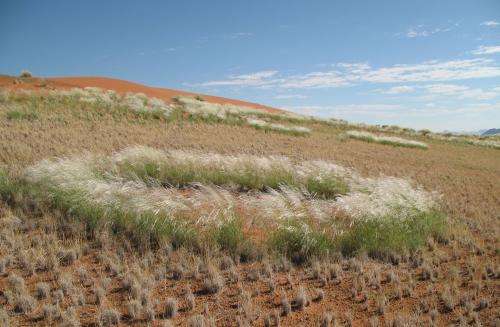Mysterious fairy circles demystified: it's termites (Update)

They appear in the desert in southwest Africa and persist for decades: so-called fairy circles, or puzzling rings of grass with a barren center.
Now a new study, published Thursday in the US journal Science, purports to end the enigma and explain just what is going on: it's the work of termites.
The fairy circles, which can stretch up to around 50 feet (15 meters) in diameter, are especially common in Namibia, where the indigenous Himba people attribute them to divine intervention.
Among scientists, the termite theory had been proposed previously but put aside for a lack of evidence.
But botanist Norbert Juergens of Germany's University of Hamburg plunged into the investigation and has offered convincing evidence that the critters behind fairy circles are likely a particular termite species called Psammotermes.

By studying a strip of desert 1,200 miles (2,000 kilometers) long, stretching from mid-Angola down to northern South Africa, Juergens determined that these termites were the only organisms consistently present when the circles were in the earliest stages of forming.
The researcher observed that the termites feed off the roots of perennial grasses, effectively wiping out the plant life nearby.
But the bare patch is then able to hold on to moisture better, because the rain water is not used and evaporated by plants. That helps the termites—and the vegetation around the edge of the circle—thrive, even during the dry season.
The result is an ecosystem, engineered by termites, transformed from a desert into a grassland, Juergens explained.
More information: "The Biological Underpinnings of Namib Desert Fairy Circles," by N. Juergens, Science, 2013.
Journal information: Science
(c) 2013 AFP



















